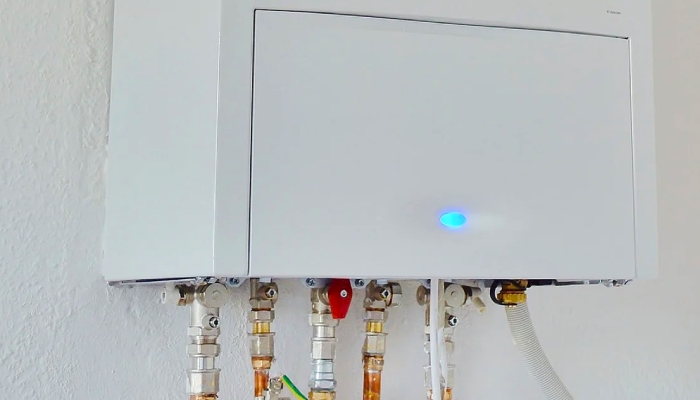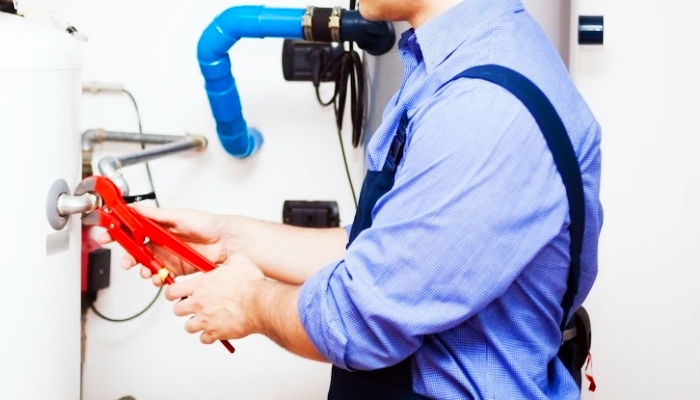
Efficient functioning of hot water systems is a cornerstone of daily life in Brisbane, contributing significantly to the comfort and hygiene of its residents. However, the city is not immune to hot water emergencies, which can occur unexpectedly and cause significant disruption. These emergencies can range from minor inconveniences to major crises, impacting not only individual households but also commercial establishments. The ability to respond quickly and effectively to such and handling hot water emergencies in brisbane quick response and repair services, is crucial in minimizing their impact and restoring normalcy.
This article delves into the nature of most hot water systems emergencies in Brisbane, examining their causes, impacts, and the critical response and repair services necessary to address them. By exploring these aspects, the article aims to provide a comprehensive understanding of the importance of efficient hot water system management and the need for rapid response mechanisms in the face of emergencies.
The Nature of Hot Water Emergencies
Hot water emergencies in an urban setting like Brisbane can manifest in various forms, ranging from complete system breakdowns to more subtle issues like temperature fluctuations or leakage. These emergencies are primarily characterized by their sudden onset and the immediate disruption they cause to daily activities. Common causes of these plumbing system problems include aging infrastructure, lack of regular maintenance, unforeseen mechanical failures, or external factors such as severe weather conditions leading to damage.
The intricacy of hot water systems, which often integrate elements like boilers, and water heaters,, plumbing networks, and electrical components, makes them susceptible to a range of malfunctions. For instance, scale build-up in pipes or tanks can lead to efficiency losses and eventual breakdowns. Electrical faults can cause sudden outages, while gas leaks in systems powered by natural gas pose significant safety hazards. The adoption of tankless water heaters in Australia has been a response to some of these challenges, offering increased efficiency and reduced risk of some types of malfunctions due to their on-demand heating and lack of storage tanks.
Moreover, the severity of a hot water emergency can vary. In some cases, it might merely result in temporary discomfort, such emergency plumbing issues such as lack of heat water or of access to hot showers. However, in more severe scenarios, especially in healthcare facilities or food service industries, the absence of hot water can halt critical operations, leading to health and safety violations.
Understanding the diverse nature of these emergencies is vital for developing effective response strategies. It involves not only a technical comprehension of the systems involved but also an awareness of the broader context in which these systems operate. As such, the response to hot water and plumbing emergencies here in Brisbane requires a multidisciplinary approach, encompassing technical expertise, swift logistical coordination, and an understanding of the socio-economic environment of the city.

Impact Assessment of Hot Water Failures
The ramifications of hot water failures in Brisbane extend beyond the immediate inconvenience of disrupted services. These impacts can be broadly categorized into three domains: health and safety, economic consequences, and social discomfort. From a health perspective, the absence of hot water poses significant risks, particularly in hygiene-critical environments like hospitals, care homes, and restaurants. Hot water is essential for effective sterilization and preventing the spread of bacteria and viruses, making its uninterrupted supply a public health priority.
Economically, hot water outages can lead to substantial financial losses for businesses that rely electric hot water systems or heavily on its availability, such as hospitality and food service industries. Residential outages also impose economic burdens, often necessitating emergency repair services urgent repairs, which can be costly. Furthermore, prolonged disruptions may lead to compensation claims from affected parties, adding to the financial strain.
Socially, the lack of hot water and cold showers affects the quality of life, causing discomfort and stress for residents. It disrupts daily routines like bathing, cooking, and cleaning, which can particularly impact vulnerable populations such as the elderly or families with young children.
To effectively manage these impacts, it is essential to have a robust understanding of the diverse ways in which hot water failures affect the city’s residents and businesses. This understanding should inform the development of responsive strategies that prioritize health and safety, minimize economic loss, and reduce social discomfort.
Brisbane’s Infrastructure and Vulnerability to Hot Water Issues
Brisbane’s infrastructure, with its mix of modern developments and aging buildings, presents unique challenges in maintaining reliable hot water services. The city’s hot water systems vary widely, from advanced, energy-efficient setups in newer structures to older systems that may be more prone to breakdowns. This diversity in infrastructure age and technology can affect the city’s hot water system repairs and overall resilience to hot water system failures.
The vulnerability of these solar hot water systems to external factors such as extreme weather events, which are increasingly common due to climate change, is an additional concern. Events like floods or storms can damage hot water systems, leading to widespread service disruptions. Moreover, the growing demand for hot water in a rapidly expanding urban population places further strain on existing systems, potentially leading to more frequent failures.
An analysis of Brisbane’s current infrastructure highlights the need for proactive measures, including regular maintenance, new hot water system and upgrades, and the integration of more sustainable and resilient technologies. These actions are crucial in reducing the city’s vulnerability to hot water emergencies and ensuring reliable service for all residents and businesses. Furthermore, this analysis underscores the importance of comprehensive urban planning that anticipates future challenges and incorporates resilience against hot water system failures.

Response Strategies for Hot Water Emergencies
Effective response strategies are crucial for mitigating the impacts of hot water emergencies in Brisbane. These strategies encompass a range of actions, from initial emergency response to longer-term system recovery and restoration. Initially, quick diagnosis emergency hot water repairs is vital to ascertain the nature and extent of the issue. This step often involves coordination between residents, building managers, and emergency plumbing services.
The deployment of emergency repair teams plays a critical role in the immediate response phase. These teams need to be equipped with the necessary skills and tools to address a wide array of hot water system problems, from pipe leaks and heater malfunctions to system-wide breakdowns. Additionally, ensuring a robust supply chain for spare parts and replacement units for hot water unit can significantly reduce downtime.
Communication is another key aspect of effective response. Keeping affected parties informed about the status of repairs and expected recovery times helps manage expectations and reduce frustration. For large-scale outages, coordination with local authorities and utility companies is essential to organize a comprehensive response and to access additional resources if needed.
Preventive measures are also part of a comprehensive response strategy. Regular maintenance and inspections of hot water systems can preempt many emergencies, reducing the frequency and severity of outages. Educating property owners and managers about early warning signs and routine upkeep can play a significant role in prevention.
Technological Advancements in Emergency Repairs
The advancement of technology has significantly enhanced the capacity to respond to and repair hot water emergencies in Brisbane. Modern diagnostic tools, such as thermal imaging cameras and advanced gas leak detection systems, allow for rapid identification of issues during hot water repairs, often without the need for invasive inspections. This technology not only speeds up the repair process but also reduces the repair-related disruption to residents and businesses.
Automation and smart technology are increasingly being integrated into hot water systems. These technologies can provide real-time monitoring and alerts for potential issues, enabling preemptive action before a full-blown emergency develops. Furthermore, smart systems can often be remotely controlled and adjusted, which is particularly useful for hot water heaters are in large buildings or in situations where immediate access is not possible.
The use of sustainable technologies, such as solar-powered hot water systems, is also gaining traction. These systems not only reduce dependence on traditional energy sources but are cost effective solution also often more resilient to certain types of failures. Additionally, the integration of renewable energy sources best hot water system aligns with broader environmental and sustainability goals.
Training and development for repair personnel are evolving in tandem with these technological advancements. Continuous training ensures that technicians are up-to-date with the latest repair techniques and technologies, thereby improving the efficiency and effectiveness of emergency responses.
The ongoing development and adoption of these advanced technologies and practices signify a forward-moving trajectory in managing hot water emergencies in Brisbane, heralding a future where such incidents can be addressed more swiftly, efficiently, and with minimal disruption.

Challenges and Recommendations for Improvement
Despite advancements in technology and response strategies, Brisbane faces several challenges in handling hot water emergencies, including the critical issue of plumbing emergencies. One of the primary challenges is the aging infrastructure in certain parts of the city, which is more prone to failures, particularly plumbing emergencies. These are exacerbated by a lack of awareness among residents and property owners about their own hot water systems, including the importance of regular maintenance, which is crucial in preventing plumbing emergencies.
Financial constraints, especially in budgeting for maintenance and upgrades of older systems, pose another significant hurdle. This financial limitation becomes particularly evident in addressing the needs of older plumbing systems, where emergencies are more frequent. Moreover, the increasing frequency of extreme weather events due to climate change adds to the risk of system damage and failure, including in plumbing systems, thereby challenging the existing emergency response frameworks. To mitigate these challenges, it is essential to focus on educating property owners, allocating sufficient resources for maintenance and upgrades, and enhancing the resilience of infrastructure to better manage and respond to hot water and plumbing emergencies.
To address these challenges, several recommendations are proposed:
Infrastructure Modernization
Invest in upgrading and modernizing hot water systems, particularly in older buildings, to improve reliability and efficiency.
Public Awareness Campaigns
Implement educational programs to raise awareness about the importance of regular maintenance and early detection of potential issues.
Financial Incentives
Introduce subsidies or financial assistance programs to encourage property owners to invest in system upgrades and preventive maintenance.
Enhanced Training for Professionals
Continue to provide advanced training for technicians to keep pace with new technologies and repair techniques.
Climate Resilience Planning
Incorporate climate resilience into urban planning, ensuring that new and existing hot water systems can withstand extreme weather conditions.
Research and Development Investment
Encourage investment in research and development of more resilient and sustainable hot water systems.
By implementing these recommendations, Brisbane can enhance its capability to manage heat pump water heaters and respond to hot water emergencies more effectively, ensuring the wellbeing and comfort of its residents and the continuity of essential services.

Conclusion and Future Directions
This article has provided a comprehensive overview of the challenges and strategies associated with handling hot water emergencies in Brisbane, including issues with plumbing emergencies, burst pipes, electric hot water systems, and the necessity for regular hot water system service. The multifaceted approach required for effective management of these incidents, from the impact assessment to technological advancements in emergency response and repair, has been thoroughly examined.
The future direction in this field lies in continued innovation and investment in technology, infrastructure, and human resources. Embracing smart technologies, renewable energy sources, and sustainable practices will not only enhance the efficiency of emergency responses, including those for plumbing emergencies and electric hot water system failures, but also contribute to broader environmental sustainability goals and resilience against climate change.
Ongoing research and development, along with public-private partnerships, are poised to drive novel solutions and improvements in hot water system management. By addressing current challenges in hot shower,, such as those posed by plumbing emergencies, electric hot water systems, and the critical role of regular hot water system service, and implementing the recommended strategies, Brisbane can become a model for other cities globally in handling hot water emergencies, ensuring the safety, comfort, and sustainability of all residents.
